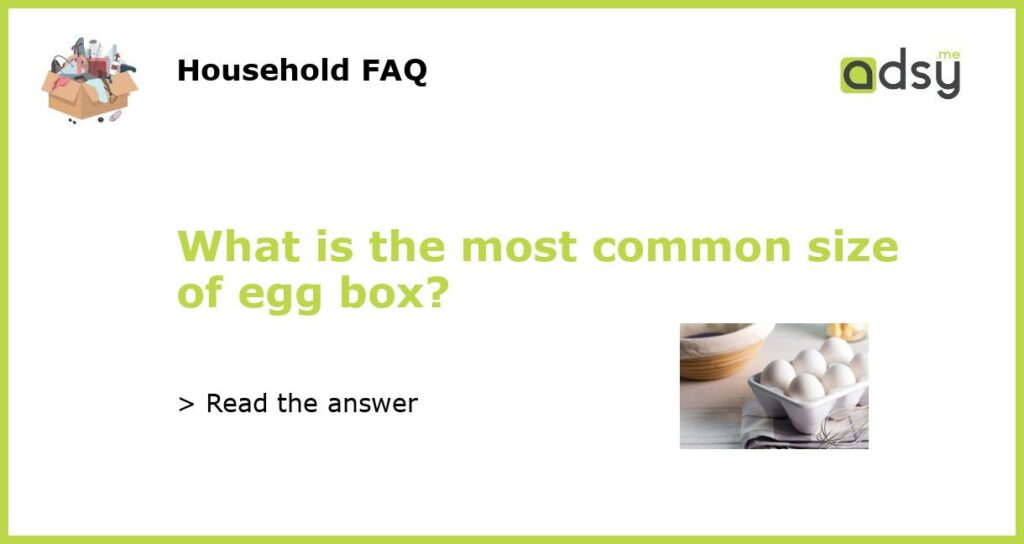The Most Common Size of Egg Box
Whether you buy your eggs at the grocery store or directly from a local farm, you have likely seen eggs packaged in a range of containers. From cartons made of Styrofoam to those made of paper pulp, egg boxes come in many sizes and materials. However, there is one size that stands out as the most common size of egg box.
The Standard Egg Box Size
According to the United States Department of Agriculture (USDA), the most common size of egg box is the standard 12-egg carton. This carton typically measures 11.4 inches long, 3.9 inches wide, and 2.8 inches deep. It provides enough space to accommodate the eggs and keep them safe during transportation and storage.
Why 12 Eggs?
The reason behind the standard 12-egg carton size is based on a compromise between the egg industry and consumers. Egg producers found it cost-effective to package eggs in dozens, while consumers liked the convenience and savings of buying eggs in bulk. Since the 1920s, the 12-egg carton has remained the most popular size for egg packaging.
Other Egg Packaging Sizes
While the standard 12-egg carton is the most common size, there are other sizes available. Some cartons hold six eggs, while others are larger and hold up to 24 eggs. Specialty cartons may hold a different number of eggs, such as 18 or 30, depending on the market or preferences of consumers.
Eco-Friendly and Sustainable Egg Boxes
In recent years, environmentally-conscious consumers have been seeking more eco-friendly and sustainable alternatives to traditional egg packaging. Some farms and companies now offer egg boxes made of paper pulp, which is biodegradable and compostable. Others use recycled materials to reduce waste and carbon footprint. These eco-friendly options come in different sizes and shapes, but the standard 12-egg carton remains the most common size overall.






